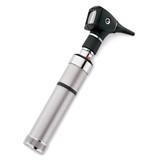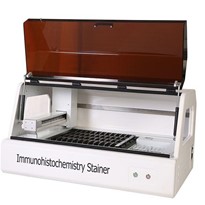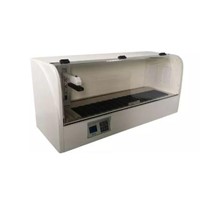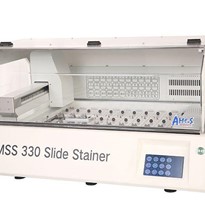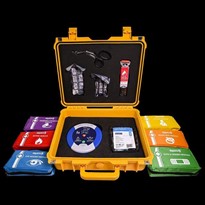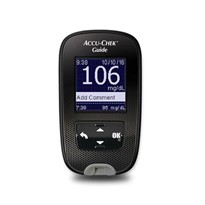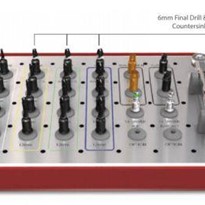Introduction
Immunohistochemistry (IHC) has become an indispensable technique in the field of pathology and biomedical research, allowing for the visualization and localization of specific proteins within tissues. A crucial component of the IHC workflow is the immunohistochemistry stainer, a tool that automates and standardizes the staining process. With numerous options available in the market, choosing the right immunohistochemistry stainer for your laboratory can be a daunting task. This article aims to provide a comprehensive guide on key factors to consider when selecting an immunohistochemistry stainer.
Throughput and Workload
One of the primary considerations when choosing an immunohistochemistry stainer is the anticipated workload of your laboratory. Different stainers come with varying throughput capacities, ranging from small benchtop models suitable for low-volume labs to high-throughput systems designed for large-scale operations. Assess your laboratory's sample processing needs and select a stainer that can accommodate your workload efficiently. Consider factors such as the number of slides processed per run and the turnaround time required for staining procedures.
Automation and Workflow Integration
Automation is a key advantage of modern immunohistochemistry stainers, streamlining the staining process and minimizing the risk of human error. Look for stainers that offer automation features such as reagent dispensing, slide washing, and drying. Additionally, compatibility with existing laboratory workflows and integration with laboratory information management systems (LIMS) can enhance overall efficiency. Evaluate the ease of integration with other instruments, such as slide scanners and digital pathology systems, for a seamless workflow.
Flexibility and Multiplexing Capability
The ability to stain multiple antigens simultaneously, known as multiplexing, is essential for studying complex biological processes and heterogeneous tissues. Choose an immunohistochemistry stainer that provides flexibility in terms of panel design and antibody combinations. Some advanced stainers allow for the simultaneous detection of multiple targets on a single tissue section, providing valuable insights into protein interactions and expression patterns.
Antibody and Reagent Compatibility
Ensure that the immunohistochemistry stainer is compatible with a wide range of antibodies and detection reagents. Stainers that support open systems, allowing the use of commercially available reagents and antibodies, offer greater flexibility and cost-effectiveness. Consider the availability of validated protocols and the stainer's ability to adapt to different staining conditions, such as variations in antibody concentrations and incubation times.
Quality and Consistency of Staining
Consistency in staining results is crucial for obtaining reliable and reproducible data. Assess the stainer's track record in providing consistent staining across multiple runs. Look for features such as automated temperature control, precise reagent dispensing, and optimized protocols to ensure uniform and high-quality staining. Additionally, consider the stainer's ability to handle various tissue types and ensure that it meets the specific requirements of your research or diagnostic applications.
Maintenance and User-Friendly Interface
Selecting a stainer with a user-friendly interface is essential for minimizing training time and ensuring efficient operation. Look for intuitive software with a graphical user interface that allows easy programming of staining protocols. Assess the ease of maintenance, including routine cleaning procedures and the availability of self-maintenance features. Consider the stainer's reliability, robustness, and the availability of technical support and service contracts.
Cost Considerations
While the initial purchase cost is a significant factor, it is crucial to consider the overall cost of ownership, including reagent costs, maintenance expenses, and any additional accessories or consumables required. Conduct a thorough cost-benefit analysis to determine the long-term affordability of the chosen immunohistochemistry stainer. Consider the potential for future upgrades and scalability to accommodate growing laboratory needs.
Regulatory Compliance
In the field of pathology and diagnostics, adherence to regulatory standards is paramount. Choose an immunohistochemistry stainer that complies with relevant regulatory requirements, such as Good Laboratory Practice (GLP) and Good Manufacturing Practice (GMP). Ensure that the stainer meets the necessary quality assurance standards and is validated for clinical and research applications.
Conclusion
Selecting the right immunohistochemistry stainer is a critical decision that can significantly impact the efficiency and reliability of your laboratory's IHC workflow. By considering factors such as throughput, automation, flexibility, compatibility, staining quality, maintenance, cost, and regulatory compliance, you can make an informed decision that aligns with the specific needs of your laboratory. Keeping pace with technological advancements and staying informed about the latest developments in immunohistochemistry stainers will empower you to make a choice that enhances the precision and reproducibility of your IHC experiments or diagnostic procedures.


.jpg)
